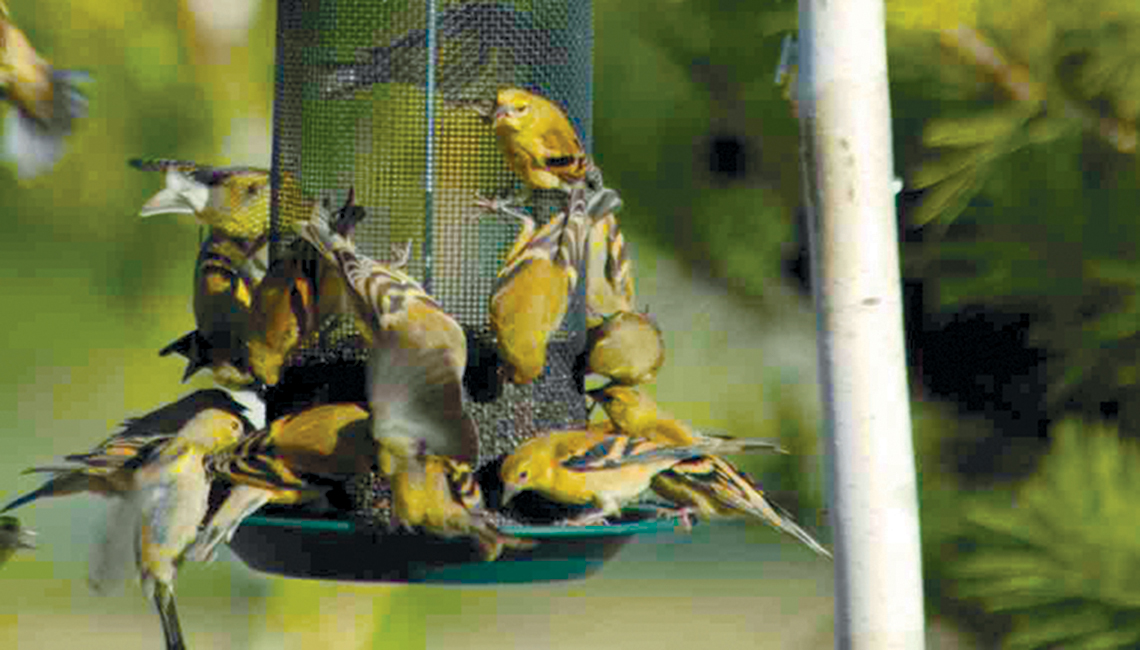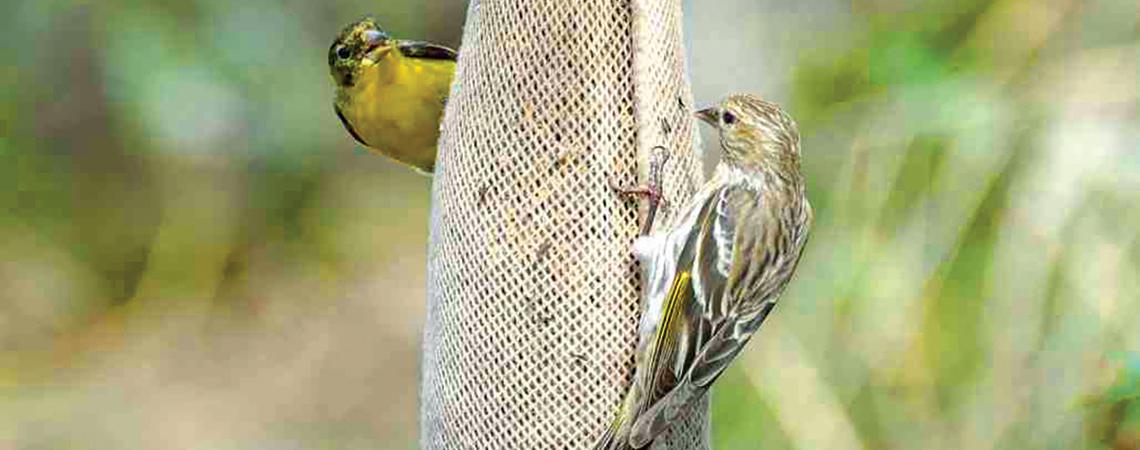One of the favorite pleasures of summertime for many backyard and garden enthusiasts is watching the songbirds that arrive for the season. Not only does the population of local birds increase as newborn chicks hatch all summer long, but migratory birds stop by for visits, too, hoping for a tasty snack.
Feeding birds in summer differs from other seasons. The weather is significantly hotter, which means making some changes in what and how you offer food. As summer temperatures soar, shade is always a welcome break, especially from noon to mid-afternoon. Place your feeder where it won’t be in the glaring sun during the heat of the day. If you offer suet cakes, it’s best to switch to dough-based ones that don't melt or spoil in the heat.
Natural seed supplies are low this time of year, so follow these tips to keep your feathered friends healthy and full.
Certain seeds are best served in specific feeders.
Feed birds quality food
When looking for birdseed, avoid any containing debris such as empty shells, sticks, or stones. Seed should be as dust-free as possible.
Pass on any birdseed mixes that contain milo, wheat, sorghum, or red millet. White proso millet is the exception — birds that feed on the ground enjoy it — but don’t choose a blend with white millet as the main ingredient.
Do the “pinch test” on black-oil sunflower seeds. When you pinch a single seed with your fingernails, the oil from the split seed should dot your fingers. If it does, then the quality is good.
Diversify your offerings
Black-oil sunflower seeds (with or without shells) and any form of suet are sure bets for attracting beautiful songbirds in summer, but you can increase the attraction and keep them coming back to your feeders when you serve a variety of treats tempting to backyard birds.
Offer seeds, nuts, fruit, and suet to ensure a diverse source of good nutrition for the bird species in your area. Varying the menu helps attract the greatest variety of discerning diners.
Feeder strategies
Instead of one feeder with one kind of food, try placing a variety of bird feeder types at different heights, each with a different mix of food.
Certain seeds are best served in specific feeders. For example, dish-and-bowl feeders are great for serving seeds and seed blends as well as dried mealworms, fruit, and suet. Traditional tube feeders are good all-purpose feeders and essential for any backyard bird-feeding station — especially for finches, nuthatches, and other small birds that cling.
Keep the squirrels away
Stock your feeders with seeds that birds love but squirrels hate, such as safflower seeds, nyjer seed, and white millet. Some companies offer lines of hot and spicy birdseed that is a safe and humane way to discourage squirrels — birds love the hot spicy flavor, while squirrels do not.
Bring your tape measure out to help determine feeder placement. The average squirrel can jump 4 feet vertically from the ground and at least 10 to 12 feet horizontally from a tree or other object. Put your feeder on a pole 15 feet away from the nearest jump-off and make sure it is 5 feet off the ground. You can also attach an 18-inch-diameter baffle on the pole below the feeder to keep squirrels from climbing up the pole.











